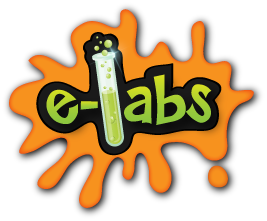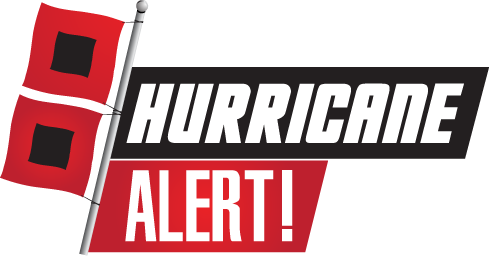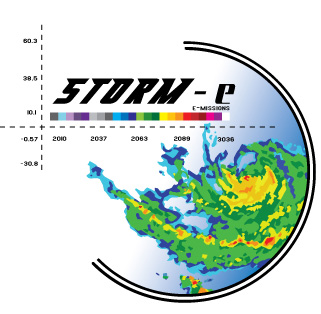|
|
||||||
|
Hurricanes! Volcanoes! Space Shuttles! Lunar Bases! Mars! Comets! Fires! Blizzards! Tornadoes!
e-Missions™ are simulated, problem-based, learning adventures delivered right into the classroom via distance learning technology. With the use of the Internet and videoconferencing equipment, these “live” scenarios are conducted in your classroom by a Flight Director at Mission Control from the Challenger Learning Center at Wheeling Jesuit University.
e-Missions are great tools for teachers to motivate students to learn math and science while at the same time meeting standards and objectives in the classroom. Each e-Mission provides a website with standards-based materials, activities, and lesson plans to help you prepare your students pre-mission. The website also provides all the mission materials needed for the culminating live event on mission day. The e-Mission is a student-centered, team-based, interactive educational experience that uses scientifically accurate data to solve problems. Your class will assemble as an emergency response team and then connect via technology to the Flight Director at Mission Control. All teams work together with Mission Control to handle the problem situation as the scenario unfolds. Every few minutes new data is received in the classroom via satellite and your teams perform calculations, create graphs, and assess the situation. The expert teams in your class then make recommendations to Mission Control based on their analysis. On mission day your class will turn into a hub of activity as your students use teamwork, communication, and problem-solving skills to avoid disasters and save lives. Research indicates that this way of learning leads to improved critical thinking skills. The impact of this fast-paced, engaged learning environment will help you create lifelong learners in your classroom. We have a variety of e-Mission packages available, so check out the websites below to select which one will best meet the needs of your class. Also, check the technology requirements for each e-Mission. For additional information about any of our e-Mission packages available, contact Lori Kudlak, Assistant Director of our e-Mission program. Once you have selected your mission, you are ready to schedule this event. Join us in an exciting e-Mission adventure that will leave your students asking for more. Book an e-Mission today by filling out the reservation form and e-mailing it to Barb Crawshaw. Learn more about our Challenger Learning Center and the research that has been conducted on our programs. Read more, or watch our e-Missions information video. Coming Soon: You can view our online catalog or download a copy of the catalog to view/order your e-Mission merchandise. Teachers fill out the online order form once you have collected your student’s orders. |
||||||

|

|
|||||
|
|
||||||
 Grades 3-12 Science |
The e-Labs are virtual and interactive lessons in various science subjects, such as physical science, chemistry, life science, Earth and space science that include a live video conference event. During an e-Lab scientists perform experiments and demonstrations, guide students through difficult concepts, while asking and answering questions. Students are inspired to ask questions and draw conclusions to deepen their understanding of many core concepts. Standards: Multiple covered. |
|||||
|
|
||||||
 Grades 9-12 Health Science |
Students become a rapid response trauma team aboard a Mercy ship traveling up the Amazon. The emergency specialists in your classroom will use a state-of-the–art, high-tech medical interface to triage a wide range of patient ailments. The goal during this scenario is to accurately diagnose patients, order needed tests, interpret test results and assign appropriate treatment as well as assign suitable NIH clinical trials to as many patients as possible during a shift. This intense simulation provides an engaged and immersive learning environment that challenges your students’ critical thinking and problem solving skills. Your students will work collaboratively with a Chief Medical Officer at the Challenger Learning Center in hopes of saving the lives of the native population and Medical Research personnel in the rainforests of Brazil. Standards: Science standards that apply to body systems and the disease process of humans. |
|||||
|
|
||||||
|
Grades 5-9 Science, with connections to Math, Social Studies & Language Arts
|
The Soufriere Hills volcano located on the small island of Montserrat is ready to erupt at the same time a Category 3 hurricane is approaching the island from the east. The volcano team calculates rock fall and volcanic tectonic data to predict what will happen with the volcano. The hurricane team tracks the approaching hurricane and calculates estimated times of arrival on the island. The evacuation team uses population maps and available transportation options to move residents out of the danger zones to safe shelters on the island. Your team receives satellite data from the island every 5-6 minutes to assess the situation. The communication team’s job is to keep Mission Control informed about this brewing situation on Montserrat and to relay recommendations from all teams. Standards: Earth science, water cycle, weather, oceans & energy, rock cycle, lithospheric plates, ecosystems and spheres, risk management, graphing, graph interpretation, math in everyday life. Also available in Spanish: Student Site | Teacher Site |
|||||
|
|
||||||
 Grades 5-9 Math and Science |
Transform your classroom into a hub of activity as your students simultaneously track multiple storms brewing in Hurricane Alley. Your storm trackers become the weather experts as they analyze data, assess the severity of the storms and make recommendations for affected areas. Standards: weather, air pressure, wind speeds, storm tracking, graphing, graph interpretation, conversion of units, math in everyday life. |
|||||
|
|
||||||
 Grades 4-6 Science |
Storm-E is an engaging, culminating event to any weather unit. The classroom becomes a command center of experts to make weather predictions. Air pressure, humidity, temperature, and wind data is analyzed by your team of experts and they are asked to help make decisions to hold or cancel outdoor events based on maps, charts, graphs, and satellite images provided to each team. Standards: weather: air pressure, humidity, temperature & wind, graphing, graph interpretation, math in everyday life. |
|||||
|
|
||||||
 Grades 3-5 Math, Language Arts, Science |
Moon, Mars, and Beyond The class is organized into 5 planet teams to help NASA locate and rescue a lost space ship that is orbiting one of the outer planets. Each planet team consists of Cargo, Navigation and Transmissions Specialists. The Cargo Specialists calculate the number of days for a round trip to their planet and the amount of food, water and oxygen needed for the rescue trip. The Navigation Specialists will plot coordinates to help get some location information on the lost space ship. The Transmissions Specialists decode messages which give them clues about the location of the space ship over the last 5 days. All teams work together using information they receive to determine where the lost ship is located. The Communications Team relays all information to Mission Control so that a rescue ship with all the loaded cargo can be launched from our base on Mars to that planet. Your class will locate and rescue the lost ship. Standards: X-Y graphing, graph interpretation, team problem solving, math in everyday life, multiplication (using units), objects in the solar system. |
|||||
|
|
||||||
 Grades 5-12 Physical Science, Biology, Chemistry, Physics 5-8: Student Site | Teacher Site 9-12: Student Site | Teacher Site |
The astronauts aboard the International Space Station are trying to protect themselves from the worst solar flare ever recorded. The Radiation Team continually calculates the radiation levels from two TEPC monitors in various locations on the space station. The Life Support Team calculates the carbon dioxide and oxygen levels in the cabin and makes recommendations to keep those levels normal. The Crisis Management Team monitors all systems on board to ensure the astronauts are safe. Crisis Management also tracks the power load and the battery reserves available to ensure the safety of the crew. The Storm Team (for grades 9-12) calculates x-ray and proton readings to predict when the storm will cause problems for the ISS. Recommendations are made to shield the astronauts from the harmful radiation, to keep the life support systems in balance, and to ensure the International Space Station has enough power to get through an eclipse as it weathers this solar storm. The Communication Team keeps Mission Control informed about the status of the station and relays recommendations from all teams. Standards: what is light & electromagnetic spectrum, human physiology of respiration, atmospheric gases, air pressure, fission/ fusion, magnetism/ electromagnetism, power & electricity, risk management, graphing, graph interpretation, math in everyday life. |
|||||
|
|
||||||
|
Grades 6-8 Math; Probabilities |
A comet is on target to hit one of our lunar settlements. The Comet Tracking Team tracks the comet as it is approaching and provides Estimated Times of Impact and the Distance Reached by Ejecta. The Moon Mapping Team calculates which location on the moon has the highest probability of impact and the area of the impact. The Crisis Management Team determines which base needs evacuation orders and executes those orders. They are responsible for moving equipment and personnel to safety and calculating the estimated arrival times of astronauts using various methods of transportation. The Communication Team relays all data and recommendations to Mission Control as the team handles this crisis. Standards: area of a circle, distance/ time/ rate, probabilities, risk management, graphing, graph interpretation, math in everyday life. |
|||||
|
|
||||||
|
Grades 6-8 Math; Geometry |
The goal of this mission is to conduct aerial reconnaissance missions to find the ideal location to build the first Martian base. The ideal location will have to be large enough and have a high level of hematite, a mineral normally formed in the presence of water. Each team controls the flight path of their M.A.R.S. plane trying to visit as many sites as they can before running out of fuel. The Navigation Specialists compares the different sites, selects the sites to visit, and calculates fuel consumption throughout the mission. The Science/Operations Specialists calculate the area of the site and the hematite content and then rate each site. The Communication Specialists relay all information to Mission Control throughout the mission. Standards: rates, geometry, conversion of units, risk management, graphing, graph interpretation, math in everyday life. |
|||||
|
|
||||||
|
Grades 6-8 Math; Statistics |
The year is 2037 and NASA has established a lunar outpost to enable lunar and Martian exploration, mining and astronomical observations of deep space. Our astronaut crew at this lunar outpost routinely checks each module on the base. During a routine check to record thermal data on one of our storage units, an astronaut detects a fire in progress! Investigation Specialists calculate various components of the fire. The CO2 & O2 Specialists use an on-line Fire Simulator that yields data. They calculate the mean, median and mode for the data given and then graph a box and whiskers plot for each run of the simulator trying to determine a central tendency for the data. Students use math skills and statistics to determine the cause of the fire and to make recommendations for fire suppression on the moon. The Communications Specialists report all information to Mission Control and update the data received from their teams using the Mission Control Board. Standards: mean, median, mode, box-and-whiskers plots, area and
volume, risk management, graphing, graph interpretation, math in everyday
life. |
|||||
|
|
||||||


